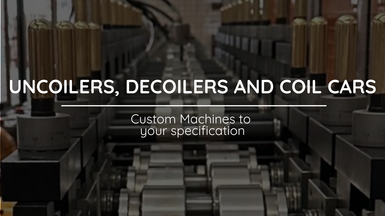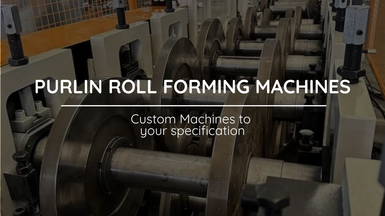
What Is Metal Rollforming
Metal roll forming is the process of fabricating sheet metal into various products with highly specific dimensions and is a very complex process.
Posted on Tuesday, June 15, 2021
Roll forming machines come in a wide variety of sizes with differing product outputs and speeds, so anyone considering purchasing one to enhance their business must make sure they do their research first.
Whether you are aware of it or not, so many products have been crafted using the process of metal roll forming, and they can be found all around us. Metal roofing plays a considerable part in manufacturing products for so many industries, from farming and technology to automotive and housing.
How Do Metal Rollformers Work
Metal roll formers work by continuously bending a strip of metal (usually chile steel or aluminum). The metal is passed through a series of rollers; each one bends the metal in a specific way, then passing it onto the next until the specified cross-section profiles are achieved.
Roll forming is the ideal solution for producing longer-length parts and is highly efficient and productive, meaning if parts are required in mass quantities, metal roll forming provides a fantastic solution. Roll forming machines are easily transported to be moved to different job sites and various locations as needed.
Metal fed into a roll former can be finished, coiled, or flat and manipulated into its desired shape.
The History Of Roll Forming
The origins of metal roll forming began as early as 6,000BC. The process back then was centered around hammering metal such as copper and gold with hard objects to flatten or manipulate them into a particular shape.
Techniques advanced through the decades, and the modern metal roll former is attributed to famous artist Leonardo Da Vinci who sketched a ‘rolling mill’ in 1480. By the 1600s, a more contemporary version of an actual metalworking plant was established in the UK.
Metal roll forming has grown substantially over the years as more industries have advanced their technologies, and the demand for the service of metal roll formers has increased. The inclusion of computer technology means metal roll formers can be programmed to exact specifications and produce perfect uniform results every time - as technology continues to advance, so metal roll formers will change to adapt to consumers’ needs.
Which Industries Use Metal Roll forming?
There are many different industries and sectors that rely on metal roll forming, such as:
- Aeronautics
- Agricultural
- Architectural
- Automotive
- Construction
- Industrial
- Technology
And many more.
The Importance of Roll Forming Equipment
The equipment produced by roll forming machines has helped so many industries become more efficient and productive. Without the parts that roll formers make, human labor would be so much more significant. The machines are far more precise and effective. Trying to re-create what metal roll formers achieve by hand would be slower, more expensive and tougher too.
Final Thoughts
Hopefully, this overview provides a basic understanding of what metal roll forming is, why it’s so necessary across so many industries, and the kinds of products metal roll forming can produce.
Roll Forming Machines LLC's New Factory
Posted on Sunday, March 23, 2025
We have relocated factories, which will be available for tours very soon.

Uncoiler, Decoiler and Coil Car Roll Forming Machine Accesories from Roll Forming Machines LLC
Posted on Sunday, November 24, 2024
Contact us today with your specifications for a custom Uncoiler, Decoiler or Coil Car at [email protected] or call us at (+1) (407) 859 1119

Stud and Track Roll Forming Machines from Roll Forming Machines LLC
Posted on Saturday, November 23, 2024
Contact us today with your specifications for a custom Stud and Track Machine at [email protected] or call us at (+1) (407) 859 1119

Cee and Zee Purlin Roll Forming Machines from Roll Forming Machines LLC
Posted on Saturday, November 23, 2024
Contact us today with your specifications for a custom Cee and Zee Purlin Machine at [email protected] or call us at (+1) (407) 859 1119